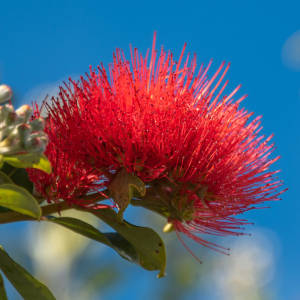Pureness of Beauty
The heavens are still playing me about.. yesterday I didn't tell you but on my way home from dropping of the car I sprained my ankle. I didn't fall but just went over on the ankle because there was a small branch I hadn't noticed on the footpath. Today I have a bruised ankle and my back has gone again. And to top that off my computer said I had a illegal copy of windows, which I haven't and it kept coming up and told me to go on line and obtain the right one. I rang my son who come over after work and checked it all out. He seems to thing it was bug of some sort and it all seems Ok now. It was great to catch up with him and he spent most of the afternoon here.
This a shot of one of my Hellebores in my garden. it was hard to get a good shot as it was really windy. Hellebores are commonly known as “Winter Roses” and I have many different shades of greens, whites and pink ones which originally came form my father so are the old kind. You can get some really wonderful ones now.
Here is some history I found out about on the Hellebores.
For the modern horticulturist, hellebores have a particular place in the English garden. Early flowering and tolerant of shade, their sorrowful, pendulous flower heads bring hope to us all that winter is finally broken.
Look back through the centuries however and you’ll find that ‘hope’ would not have been a word associated with the hellebore family, and for reasons more sinister than you would imagine.
Travel back through time and you will find that many of the ancient civilisations have used hellebore as a medicine. Traditionally used as a cure for paralysis, gout, and insanity, many species within the hellebore family are in fact highly toxic causing symptoms such as vertigo, swelling of the tongue and throat, tinnitus, and thirst. In extreme cases it can lead to slowing of the heart, heart attacks, stupor, and even death!
It’s these darker qualities that the hellebore possesses which have, over the years, helped to cloak it in a number of dark myths and folklore. Perhaps most recent is its association with witchcraft and its use in summoning demons.
There are also stories of the great Hippocrates using hellebore as a purgative although the actual plant used is believed to be the white hellebore, also known as Veratrum album or False Hellebore. Nevertheless, this plant is also highly toxic containing the poisons jervine, cyclopamine and veratrine.
However there is however one story in Greek Mythology where Hellebore has been given a positive message. It was used to cure the daughters of King Midas after they were touched by madness and found running naked through the streets screaming. Believed to have been given the madness by the god Dionysus, it was the quick thinking actions off Melampus of Pylos who, after administering a potion of hellebore, managed to save both the daughters and the day.
There is one more rather charming story that is derived from the Helleborus nigra, a plant which is more commonly known as the Christmas rose. Tradition says that the Christmas rose received its name after growing from the tears of a young jewish girl. The reason why she was so sad was because she was too poor to have a gift to give the baby Jesus, as was the custom in her day. The rest of that story, as they say, is history.
For more information on the Hellebores.

Comments
Sign in or get an account to comment.


